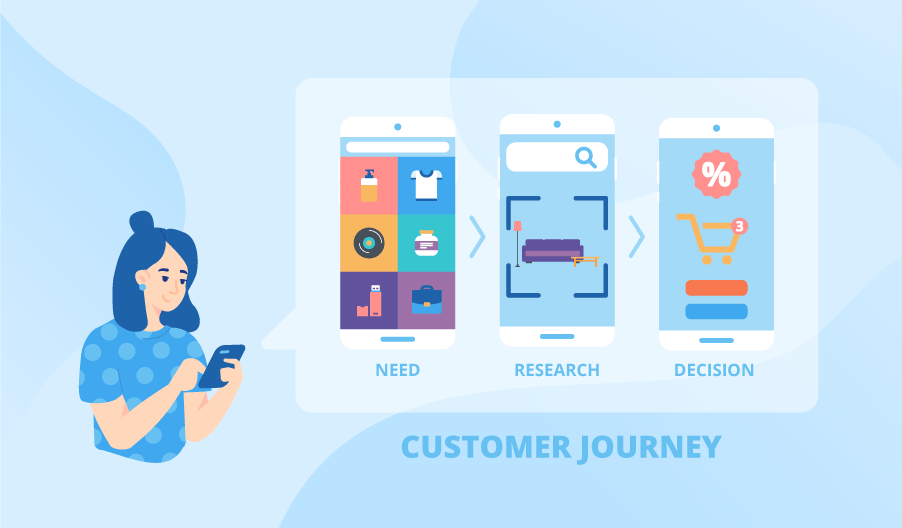How to Support Customer Journey with a Mobile Strategy
Editor’s note: As today’s customers tend to switch between desktop and mobile devices during e-shopping, more and more of ScienceSoft’s clients request a mobile-specific strategy to support customers in their purchase journey. Read on to learn the benefits of a mobile customer journey and feel free to contact our ecommerce consultants to help you improve yours.
Online shopping has been multi-device for more than 5 years now, so when helping clients to build a solid customer journey, ScienceSoft always includes mobile devices in the digital customer experience strategy. Below, we share how your ecommerce business can leverage mobile devices in the first three steps of the customer journey.

1. Need
The moment a customer realizes they need a specific item or services, their reflex is to take out a smartphone – which is always at their fingertips – and put a query in the browser search. This is the simple reason why a mobile channel is often the entry point of the customer journey.
To not let it end there, ScienceSoft strongly recommends you to have a mobile-friendly web store. If you have an app, offer your web store visitors to download it and switch to it. However, having an app doesn’t mean that your web store shouldn’t be responsive. Most customers won’t even install an app of the shop they never made a purchase with. At the point of ‘need’, they are looking specifically for a browser-compatible answer to their query, and if you want to grab their attention, responsive design is a must.
2. Research
The research step greatly varies in duration: some people need a few minutes, others – a few weeks. ScienceSoft’s mobile commerce experience shows that this step is often performed from mobile devices, so here are a few tips to make mobile research convenient for your clients:
- Facilitate your web store search. In our article on ecommerce UX, we mentioned the importance of convenient search and explained how predictive search should work on mobile.
- Take advantage of new mobile technologies. Unlike desktop devices, smartphones and tablets can be used for some impressive gimmicks, such as AR-powered shopping.
- Offer a voice-chat option. Considering that a user is on their phone, they may feel more comfortable talking than typing.
3. Decision
The factors that affect the purchasing decision the most are trust and price. Here’s how your mobile strategy can assist in this step:
- Nurture your review section.
Simply having a review section on a website isn’t enough. The thing is, people who aren’t satisfied with a product or services write reviews more often than those who are. You can have 20 fully content clients and 2 disappointed ones and end up with 1 positive and 2 negative reviews.
ScienceSoft recommends to take advantage of mobility and motivate your satisfied customers to share their impressions. Send your converted customers a notification with a concise review form that they can fill in and submit on the go. This way, your products will get more positive reviews that will convince your new customers. - Offer discounts for mobile checkout.
You can celebrate your newly launched mobile app or a mobile version of the web store by offering your clients mobile-exclusive discounts. Such an offer will not only raise the conversion of existing customers but also attract the attention of new ones and motivate them to complete a purchase.
Convert your clients on mobile
Don’t stop on the initial 3 steps but make mobile devices a part of the full customer journey. ScienceSoft is ready to devise a unique mobile strategy to guide your clients through the rest of the steps.
